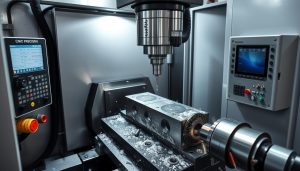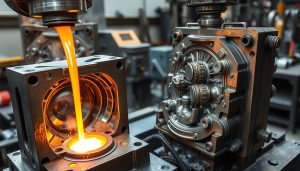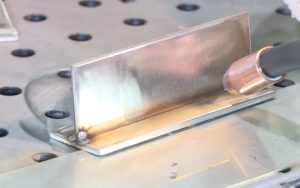Choosing between general anodizing and anti-UV anodizing can greatly affect your products’ look, feel, and lifespan. But what makes these two methods different? Exploring aluminum surface protection could help you achieve better quality and durability in your work.
As people want products that last longer and look better, knowing the difference between general and anti-UV anodizing is key. What are the main features of each method, and how can they fit your project’s needs? Join us as we dive into the details and find out how to improve your aluminum surface finishing.
What is General Anodizing?
General anodizing is an electrochemical process that makes metals, like aluminum, more durable. It creates a protective oxide layer on the metal’s surface. This layer boosts the metal’s corrosion resistance and makes it last longer.
The oxide layer formation during general anodizing offers many benefits. It’s why this method is widely used in different industries.
Process Overview and Key Features
The general anodizing process involves dipping metal parts in an electrolytic solution. An electric current is then passed through it. This reaction makes the metal’s surface oxidize, forming a hard, durable aluminum oxide layer.
The thickness of this layer can be adjusted. This allows for better protection and a nice look.
Common Applications and Benefits
- Improved corrosion resistance and protection against environmental wear and tear
- Enhanced hardness and wear resistance for improved lifespan
- Decorative finishes in a variety of colors, textures, and patterns
- Widely used in aerospace, architecture, automotive, and consumer electronics industries
General anodizing is both versatile and cost-effective. It’s a top choice for those looking to improve their aluminum products’ performance and looks. By understanding the electrochemical process and the unique oxide layer formation, companies can create products with better corrosion resistance and longer life.
What is Anti-UV Anodizing?
Anti-UV anodizing is a special way to make metal surfaces last longer and protect them from UV rays. It’s different from regular anodizing, which mainly makes metals look better and resist corrosion. Anti-UV anodizing focuses on keeping metals safe from UV damage.
Process Differences from General Anodizing
The main difference is the use of a UV-resistant coating in the process. This coating is added during anodizing. It creates a strong barrier that keeps the metal’s color bright and protects it from UV rays.
Enhanced UV Resistance and Durability
The UV-resistant coating in anti-UV anodizing absorbs and reflects UV rays. This protects the metal from fading and discoloration. It also makes the metal last longer, perfect for outdoor use where UV rays are strong.
| Feature | General Anodizing | Anti-UV Anodizing |
|---|---|---|
| UV Protection | Limited | Excellent |
| Color Stability | Moderate | High |
| Durability | Good | Enhanced |
Anti-UV anodizing uses a specialized anodizing method. This makes the metal surfaces stay bright and resist UV damage. It’s great for outdoor use where colors need to stay vibrant for a long time.
“Anti-UV anodizing provides an unparalleled level of protection, ensuring that your metal surfaces maintain their vibrant colors and pristine appearance even in the face of intense UV exposure.”
Key Differences Between General and Anti-UV Anodizing
Anodizing comes in two main types: general and anti-UV. The main differences are in coating thickness, what the coating is made of, and how well it holds up against the weather. These differences affect how long and well an anodized surface lasts in different uses.
Coating Thickness and Protective Layers
The main difference is the coating’s thickness. General anodizing has a thinner coating, between 5 to 25 microns. On the other hand, anti-UV anodizing has a thicker coating, between 15 to 50 microns. This thicker coating offers better protection against the environment.
The protective layer itself also differs. General anodizing mainly uses aluminum oxide. Anti-UV anodizing adds titanium oxide to the mix. This extra ingredient helps protect against UV rays.
Resistance to Fading and Environmental Wear
Anti-UV anodizing stands out because of its thicker coating and special protective layer. It has better weathering resistance and resistance to fading. This makes it great for outdoor use where things need to last a long time and keep their color.
| Characteristic | General Anodizing | Anti-UV Anodizing |
|---|---|---|
| Coating Thickness | 5 to 25 microns | 15 to 50 microns |
| Protective Layer Composition | Primarily Aluminum Oxide | Aluminum Oxide + Titanium Oxide |
| Weathering Resistance | Moderate | Enhanced |
| Resistance to Fading | Moderate | Superior |
The differences in anodizing comparison, protective layer thickness, and weathering resistance mean each type is best for certain uses. We’ll look at these differences in more detail next.
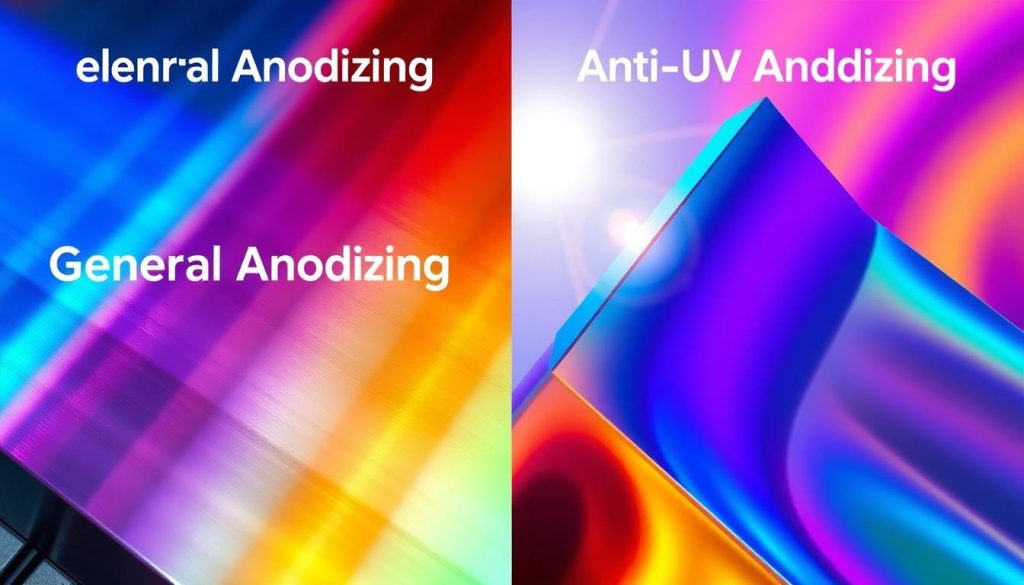
Applications of Each Type
Choosing between general anodizing and anti-UV anodizing depends on the application. General anodizing is great for indoor and aesthetic uses. Anti-UV anodizing is best for outdoor and high-exposure settings.
General Anodizing for Indoor and Aesthetic Use
General anodizing is perfect for indoor applications focusing on looks. It offers many color options, from soft to bright, for designs in architecture, electronics, and more industry-specific anodizing. It’s durable and lasts long, ideal for places without harsh outdoor durability needs.
Anti-UV Anodizing for Outdoor and High-Exposure Environments
Anti-UV anodizing is best for outdoor and high-stress areas. It protects against UV damage, fading, and weathering. It’s used in the auto, marine, and construction fields, where outdoor durability is key.
| General Anodizing | Anti-UV Anodizing |
|---|---|
| Ideal for indoor and aesthetic applications | Excels in outdoor and high-exposure environments |
| Focus on visual appeal and color options | Emphasis on enhanced UV resistance and durability |
| Durable and long-lasting | Superior protection against fading and environmental wear |
| Used in architectural elements, consumer electronics, and industry-specific anodizing | Widely used in automotive, marine, and construction industries for outdoor durability |
Knowing the strengths of general and anti-UV anodizing helps in making the right choice. This ensures products perform well, whether for indoor applications or outdoor durability needs.
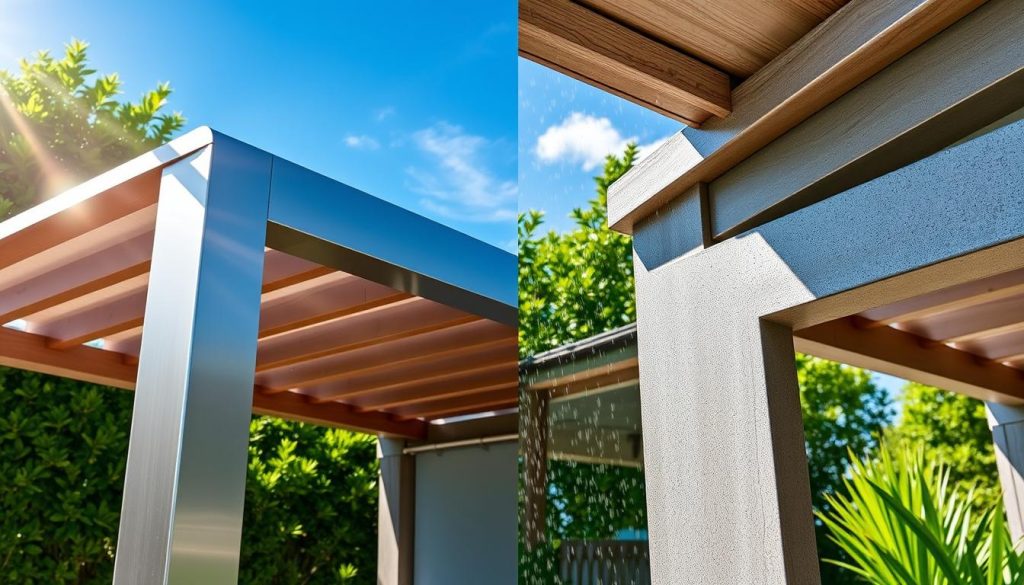
Shixinproto’s Anodizing Services
Shixinproto is a top name in customized anodizing solutions. They are known for their top-notch expertise and quality. They understand both general and anti-UV anodizing well. This makes them perfect for meeting different client needs.
Expertise in Custom General and Anti-UV Anodizing
Shixinproto’s team is full of experienced professionals. They aim to provide innovative anodizing solutions that go beyond what clients expect. They handle both general anodizing for indoor use and anti-UV anodizing for outdoor use. They use the latest technology to ensure great results.
Why Choose Shixinproto for Anodizing Solutions
Choosing Shixinproto means choosing quality and expertise. They are the go-to for businesses looking for reliable anodizing solutions. They focus on custom color matching and strict quality control. This ensures every project is of the highest standard.
By working with Shixinproto, you can be sure your anodizing needs are in good hands. They are all about precision, efficiency, and making customers happy.

